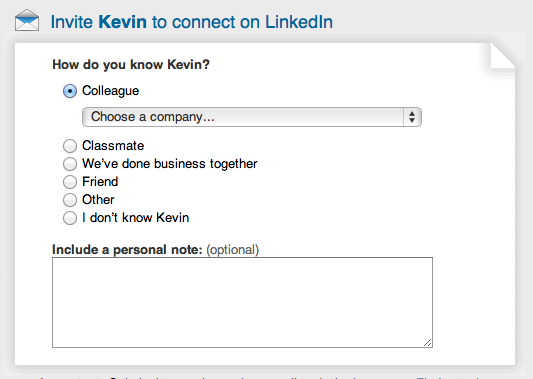You’ve all been there. You receive a connection request notification email from LinkedIn. You open it to see which IFMA attendee it is, when you realize – you don’t recognize this person. You’ve never met or even seen this person ever in your life. They may live in a different country, work in a completely different industry, isn’t it strange to connect with people you don’t even know? Actually it’s not entirely strange, especially on LinkedIn, and here’s why.
Why Connect With People You Haven’t Met?
LinkedIn’s purpose is to bring professionals together. In fact, LinkedIn even calls the people in your network “connections” as opposed to “friends”. There should be an understanding that this platform is very different from your Instagram or Facebook accounts. It is a great place to put faces with the email accounts you have interacted with or departments in your facility you’ve never formally met. Whether you want recommendations for facilities management software, or more information on a company you’re interested in, it just makes everything a bit easier when you know more people.
“connections” as opposed to “friends”. There should be an understanding that this platform is very different from your Instagram or Facebook accounts. It is a great place to put faces with the email accounts you have interacted with or departments in your facility you’ve never formally met. Whether you want recommendations for facilities management software, or more information on a company you’re interested in, it just makes everything a bit easier when you know more people.
- The more connections you have established relationships with could be the difference between searching for a job for months or having a connection recommend you to their FM department right away.
- It’s also a good idea for your company’s development to have well-educated, social employees. The more connected you are, the greater the chance someone will see your brand and remember your facilities management company when their office becomes too big to handle.
- Another plus for you is the more people you’re connected with, the more your name appears in search results.
How To Send A Connection Request With Grace
LinkedIn breaks up its members into categories. Your first-degree connection are people you have accepted a request from. What’s known as a second-degree connection are those who are also friends with a person you are friends with. Your third-degree connections are those individuals who are connected to one of your own second-degree connections.
The way LinkedIn has the site set up is to protect it’s members. The last thing they want is for users to feel like their information is free to anyone who wants it. When you request to connect with someone you’re shown this screen, which prompts you to say how you know someone. You’ll only be allowed to get this far if you have a second-degree connection. Which means, you are already connected with someone that they are connected to. If you do see this screen, choose the category of the connection and follow the prompts from their. It’s always a good idea to send a personal note with your request. It only takes 20 seconds to do so, and you come across as thoughtful and will hopefully receive more accepted requests this way.

If you don’t have this second-degree connection, consider why you want to start a relationship with this person. If your reasoning is valid, and will benefit both parties, consider asking for an “introduction”. To do this you must go to the profile of the person you want to meet and select the down arrow next to their profile and select “Get Introduced”. This will show you accounts you are both connected to and you may select from those who you want to make the introduction. If you need more help, check out LinkedIn’s help page here.
LinkedIn will also allow you to pay to send inmail to other accounts. This should really only be done if you’re a recruiter or if you know this person is interested in what you have to say.
However, if you can’t think of a valid incentive, or if your reasoning is based on purely one-sided motives this might not be the best move to make. Perhaps you should hold off until one of you has a solid connecting third party. The further removed you are from the person you want to be introduced to, the harder it will be to get that introduction. Sometimes this is a good thing.

How To Respond To Requests From Strangers (and when to say no)
You certainly don’t have to accept every request you receive. Even believing in the power of inclusiveness, there are still rules to follow. If they haven’t read this or any article on the topic, they may have not provided a reason why they want to connect. Ask away! You have every right to find out WHY this person wants to interact with you. Also, be aware of profiles without proper titles or profile pictures. This can signal a red flag for fake or fraudulent accounts.
If something just feels “odd”, or you have no connections, aren’t in the same industry or even the same country, it might be best to politely decline. Your reputation and name are yours to share, and you have every right to do so. Just keep an open mind to prevent you from closing off potential positive relationships before they have the chance to begin.
[blog_cta id=’cc8d8d32-2444-47e7-8068-94a67fb6df12′]
